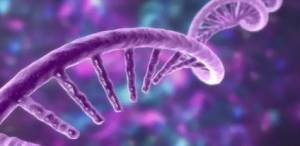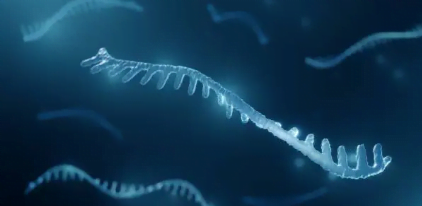
Ribonuklease, häufiger als RNase bekannt, ist äußerst wichtig Enzym Das spielt eine wichtige Rolle im RNA -Stoffwechsel in der Zelle. Aber was genau macht RNase und warum ist es für die zelluläre Funktion so wichtig?? In diesem Blogbeitrag, Wir werden RNase im Detail untersuchen und die verschiedenen kritischen Funktionen dieses Enzyms ansehen.
Was sind die verschiedenen Kategorien von RNasen?
Zu Beginn mit, RNase ist eine Nuklease, Das heißt. Es gibt zwei Hauptkategorien von RNasen:
- Endoribonukleasen: Diese spalten RNA an bestimmten Stellen intern und können auf einzelne oder doppelsträngige RNA wirken. Beispiele sind RNase III, RNase A, und RNase T1.
- Exoribonukleasen: Diese wirken schrittweise auf eine RNA -Kette, indem sie Nukleotide vom Ende entfernt haben. Exoribonuklease i spaltet am 5 -Zoll.
Was sind einige der wichtigsten zellulären Funktionen von RNase?
Innerhalb der Zelle, RNase -Enzyme nehmen an einer Vielzahl von zellulären Prozessen teil, die mit RNA zusammenhängen. Schauen wir uns einige der wichtigsten Funktionen von RNase an:
Unbenutzte zelluläre RNA löschen
Not all RNA synthesized by the cell goes on to serve a purpose. Much of it may simply be in excess or dysfunctional. RNase plays a key role in clearing out such unused RNA fragments to maintain cellular integrity. The enzyme essentially takes care of “RNA waste disposal” by degrading unprocessed and leftover cellular RNA. This prevents the accumulation of unnecessary RNA molecules within the cell.
RNase schützt vor ausländischer RNA
RNase also protects cells by degrading foreign mRNA and viral RNA. By cleaving apart invading viral RNA, RNase gives cells a line of defense against such external genetic material. This function is akin to an immune response at the RNA level.
Rolle bei der Verarbeitung von nichtkodierender RNA
In addition to protein-coding messenger RNA, cells also contain non-coding RNAs like tRNA, rRNA, snoRNA, snRNA, usw. Each of these cellular RNAs undergo processing for maturation. Specific RNase enzymes mediate cleavages during the processing of these non-coding RNA subtypes.
Zum Beispiel, RNase P is involved in cleaving the 5’ leader sequence of precursor tRNA molecules while RNase MRP processes rRNA precursors. RNase III cleaves double-stranded rRNA operons in bacteria during their maturation.
RNase reguliert die Genexpression
RNase also plays important regulatory roles when it comes to controlling gene expression. They can influence the levels of specific mRNAs by degrading them and thus lower protein production accordingly.
RNase E in bacteria is a key mediator of mRNA degradation and stabilizes some transcripts while targeting others. In Eukaryoten, small interfering RNAs (siRNAs) complexed with RNase can base-pair with and slice up target mRNAs through RNA interference.
Beteiligung an biologischen Prozessen
Beyond RNA processing and turnover, RNase enzymes also contribute to important biological phenomena within the cell. Zum Beispiel, plant RNases mediate self-incompatibility during fertilization to prevent inbreeding.
Some mammalian RNases like angiogenin promote blood vessel formation. The RNase A superfamily members have diverse biological roles despite similar structures.
Wo befinden sich RNasen in der Zelle??
RNase enzymes are integral to cellular functioning. But where exactly within the cell are these crucial enzymes located?
- The nucleus contains RNase P, RNase MRP, and other endoribonucleases that process nuclear RNAs like pre-rRNA.
- The cytoplasm houses key enzymes like RNase L which degrades RNA during interferon response.
- Mitochondria possess RNase P and other RNases that process mitochondrial RNA transcripts.
- Sekretorische RNase -Enzyme wie RNase A werden in die extrazelluläre Matrix freigesetzt.
In Prokaryoten wie Bakterien, Endoribonukleasen wie RNase E und RNase III befinden sich im Zytoplasma, während Exoribonukleasen über Zellkompartimente hinweg funktionieren.
Die RNase -Aktivität erstreckt sich über alle wichtigen zellulären Stellen, und diese weit verbreitete Verteilung ermöglicht den RNA -Stoffwechsel in der gesamten Zelle.
Was sind die verschiedenen Quellen von RNase -Enzymen?
Ribonukleasen sind allgegenwärtige Enzyme, die in praktisch allen Lebensformen vorhanden sind. Sie wurden zuerst in der Bauchspeicheldrüse entdeckt 70 vor Jahren, wurden aber jetzt aus verschiedenen Quellen isoliert, einschließlich:
- Bakterienarten wie coliproduzieren rnase i, RNase II, und PNPase.
- Pilzorganismen wie Hefe sekretieren RNase T2 und andere extrazelluläre RNasen.
- Pflanzengewebe enthalten zahlreiche unterschiedliche RNase-Typen wie Barnase und basisspezifische RNasen.
- Animal organs like the pancreas and liver secret RNase A and other RNases.
- Parasites such as malarial plasmodium harbor RNA cleavage enzymes.
- Even viruses code for viral RNases that process their RNA genome.
RNase enzymes are widespread across organisms and enable RNA metabolism in bacteria, fungi, Pflanzen, and animals. Their universality highlights how fundamental RNA processing is to life.
Wie funktioniert der katalytische Mechanismus der RNase??
Now that we have explored the sources, distribution, and broad functions of RNase, let’s look at how these enzymes exert their effects at the molecular level.
The key role of any RNase enzyme is to cleave the phosphodiester backbone within an RNA molecule. Let’s take a closer look at the mechanism of action of the most well-studied RNase – RNase A:
- It first recognizes and binds to a target single-stranded RNA substrate
- A specific histidine residue (His12) acts as a base and extracts a proton from the 2’OH group of the ribose sugar in the RNA chain.
- This initiates a nucleophilic attack by the 2’O on the phosphorus atom of the RNA backbone.
- This results in the cleavage of the adjacent phosphodiester bond and the formation of a 2’,3’-cyclic phosphate intermediate.
- Additional catalysis by other amino acids converts the 2’,3’-cyclic phosphate to a 3’-phosphate.
- The final products are RNA fragments with a 5’-OH end and a 3’-phosphate end.
While the details may vary across other RNases, the key theme is an attack on the RNA phosphodiester bond, ultimately splitting the RNA molecule into smaller fragments.
Wie werden RNase -Enzyme in Anwendungen verwendet??
Die Fähigkeit der RNase, die RNA zu beeinträchtigen:
- DNA reinigen – RNase A wird während der DNA -Extraktion hinzugefügt, um die kontaminierende RNA zu entfernen.
- RNA-Extraktion – Erfordert RNase -Inhibitoren, um Proben -RNA vor endogenen RNasen zu schützen.
- Molekularbiologie– Verwendet in Hybridisierungsassays, Mapping -Mutationen, Rekombinantes Proteinpräparat.
- Medizin – Ribonuklease -Entwicklung für die Krebsbehandlung.
- Biotechnik – RNase -Proteine, die zum Schutz in Pflanzen verwandelt wurden.
- Lebensmittelindustrie - Bakterielle RNasen, die bei der Herstellung von Nucleotid -Monophosphat -Geschmacksverstärkern verwendet werden.
Die einzigartige katalytische Kapazität von RNase wurde weitgehend über die normale zelluläre Funktion hinaus genutzt.
Abschließend, RNase -Enzyme sind entscheidende Mediatoren der RNA -Biogenese, Funktion, und Zerstörung innerhalb der Zelle. Obwohl ihre katalytische Wirkung einfach erscheinen mag, collective RNase activity governs complex phenomena like growth, development, und Krankheit. These intriguing enzymes certainly deserve their place in the spotlight!
